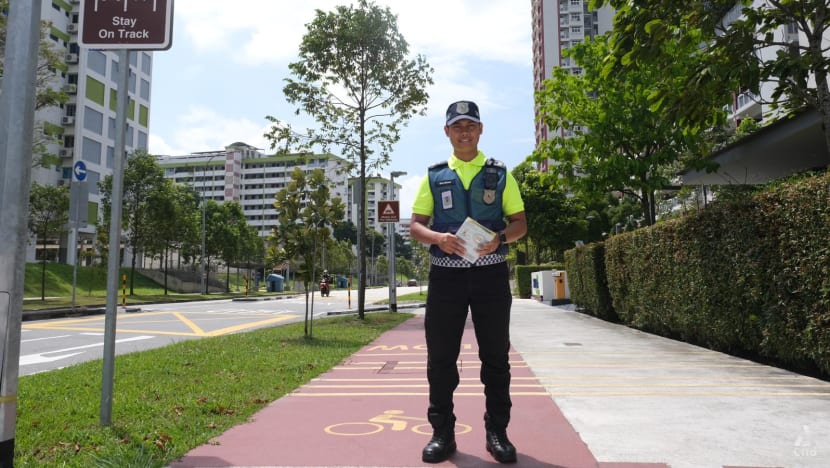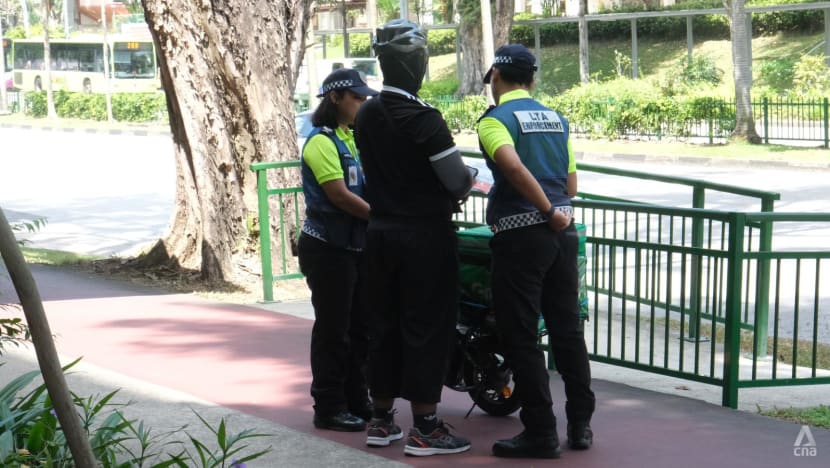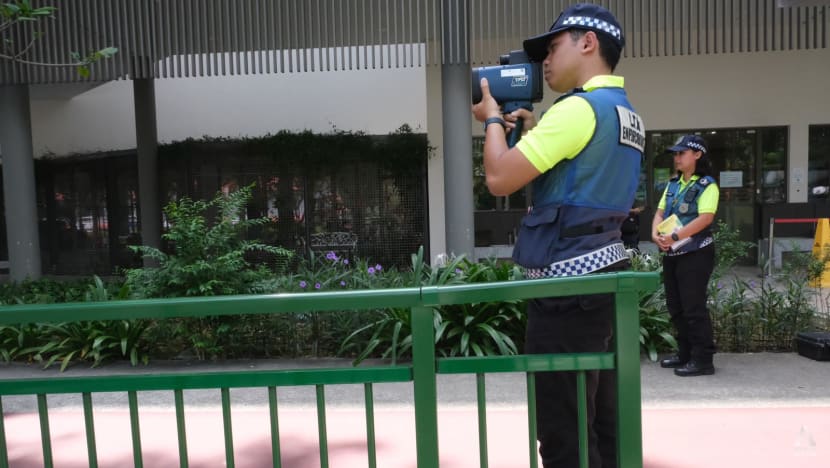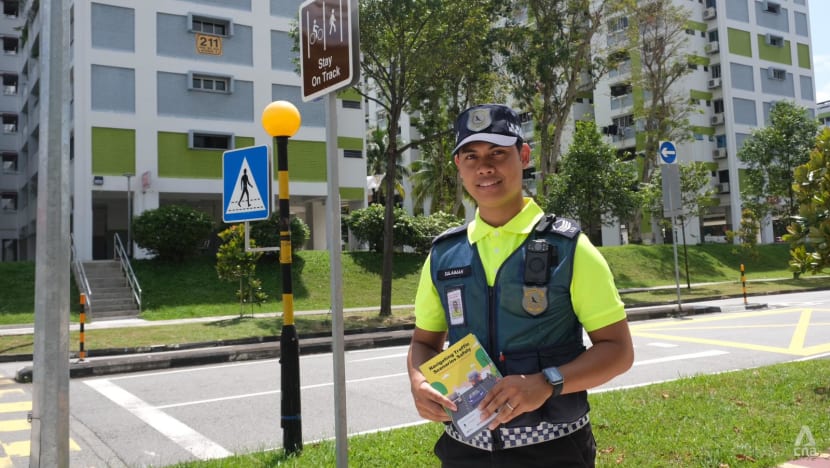Not just issuing summons: Life as an active mobility enforcement officer
His job isn't to "stand outside there finding people to summon", LTA enforcement officer Mohmmad Sulaiman Jamal tells CNA.

Sulaiman Jamal is an active mobility enforcement officer with LTA. (Photo: CNA/Matthew Mohan)

This audio is generated by an AI tool.
SINGAPORE: Conflict is an inevitable part of his job but Mr Mohmmad Sulaiman Jamal prefers to see things in a different light.
He is there to help rather than hinder.
“I enjoy engaging with people. When I'm out there, I'm also doing my job to help people,” the 29-year-old told CNA.
An active mobility enforcement officer with the Land Transport Authority (LTA), Mr Sulaiman is often out and about, conducting enforcement operations and talking to path users.
Among the things Mr Sulaiman looks out for: Illegally modified active mobility devices, people flouting speed limits or using e-scooters and e-bikes on footpaths.
Not everybody is aware of the rules and regulations, he said. The most common offence is individuals riding on the wrong path.
Bicycles are allowed on footpaths and cycling paths, while e-bikes are not allowed on footpaths but allowed on cycling paths.
While personal mobility aids (PMAs) are permitted on cycling paths and footpaths, motorised personal mobility devices (PMDs) are permitted on cycling paths but not footpaths.
Some path users also do not know the difference between active mobility devices such as PMDs and PMAs, Mr Sulaiman said.
PMDs refer to devices such as electric scooters and hoverboards, while PMAs are devices designed to carry an individual who is unable to walk or has walking difficulties. These include electric wheelchairs or mobility scooters.
“Most of the feedback that I receive (from family and friends) is that I always stand outside there finding people to summon. My reply is (that I) do not always summon … We try to help people who are really genuinely unaware of the Singapore law. They do something, it's an offence, but they genuinely are unaware about it.
“It’s our responsibility as path protectors.”
"WE DON’T HIDE"
Locations for enforcement operations are typically determined based on feedback from members of the public, said Mr Sulaiman.
“Sometimes when I'm off duty, I spot any areas that I see that (there) are violators, I will take note and then share it to the team and maybe we can plan deployments for the future.”

The officers are deployed in pairs and station themselves at locations where they can safely stop active mobility users if the need arises.
They are also usually in uniform to ensure that they are clearly identifiable. While they can be dressed in plainclothes for recce or covert operations, officers do not "hide", said Mr Sulaiman.
They are also equipped with speed guns to nab those who exceed speed limits. The speed limit on footpaths is 10kmh, while the speed limit on cycling paths and park connectors is 25kmh.
“Most of the riders are unaware of what we are doing, or they are not sure what we are holding.”
The majority of those who flout speed limits are cyclists, he said.
“Sometimes they are rushing somewhere, that’s where they forget about the speed limit,” he added.

“Sometimes we can stand for 30 minutes, 40 minutes, there’s no cyclists. Cyclists may spot us and they try to U-turn. We know that they see us and they spread the message,” he said.
There are instances where officers are met with resistance, said Mr Sulaiman. Some feel the officers are wasting their time, while others try to find a way out.
“One of the recent cases that I caught was when this rider on a bicycle … was on the phone," he recalled.
"Upon seeing me, he straight away threw his phone into the basket.”
After Mr Sulaiman stopped him, the cyclist denied using the phone while riding and claimed he was scratching his ears.
But the cyclist admitted his mistake when confronted with his own call logs. Mr Sulaiman also reminded him that his body-worn camera had recorded the incident.
On another occasion, Mr Sulaiman found himself on the receiving end of a scolding after stopping a food delivery rider on an illegally modified power-assisted bicycle.
“We engaged in a very friendly manner but the guy turned aggressive because we were going to tow the device.
“For me, I tried to understand the person’s feelings … Nobody likes having things taken away by us officers, especially if he is using that mode of transport for work.”
The man eventually calmed down and apologised.
“I told him to be honest, I would also react, maybe react the same way. But you have to understand our point. We are enforcement officers, this thing is … really dangerous, we have to do our job.”
ENGAGE, EDUCATE AND ENFORCE
Last year, the LTA launched a new initiative called the S.T.A.R. Path Champion to reward positive behaviours by public path users.
The programme is carried out by officers such as Mr Sulaiman, who look out for path users demonstrating gracious and responsible behaviour and present them with a gift card and keychain.
“We always focus on these three Es – engage, educate and enforce,” he said.

“We do engagements to share safety tips. For example, maybe slow down when you are riding down the slope, be aware of your surroundings, give way to pedestrians, especially areas like bus stops and school zones.”
Ultimately, Mr Sulaiman sees his role as a “path protector”.
“The most important thing is the mindset," he said. "They can say whatever they want. As long as you we have that positive mindset, we know that we are helping that person, then just do our job accordingly."

















